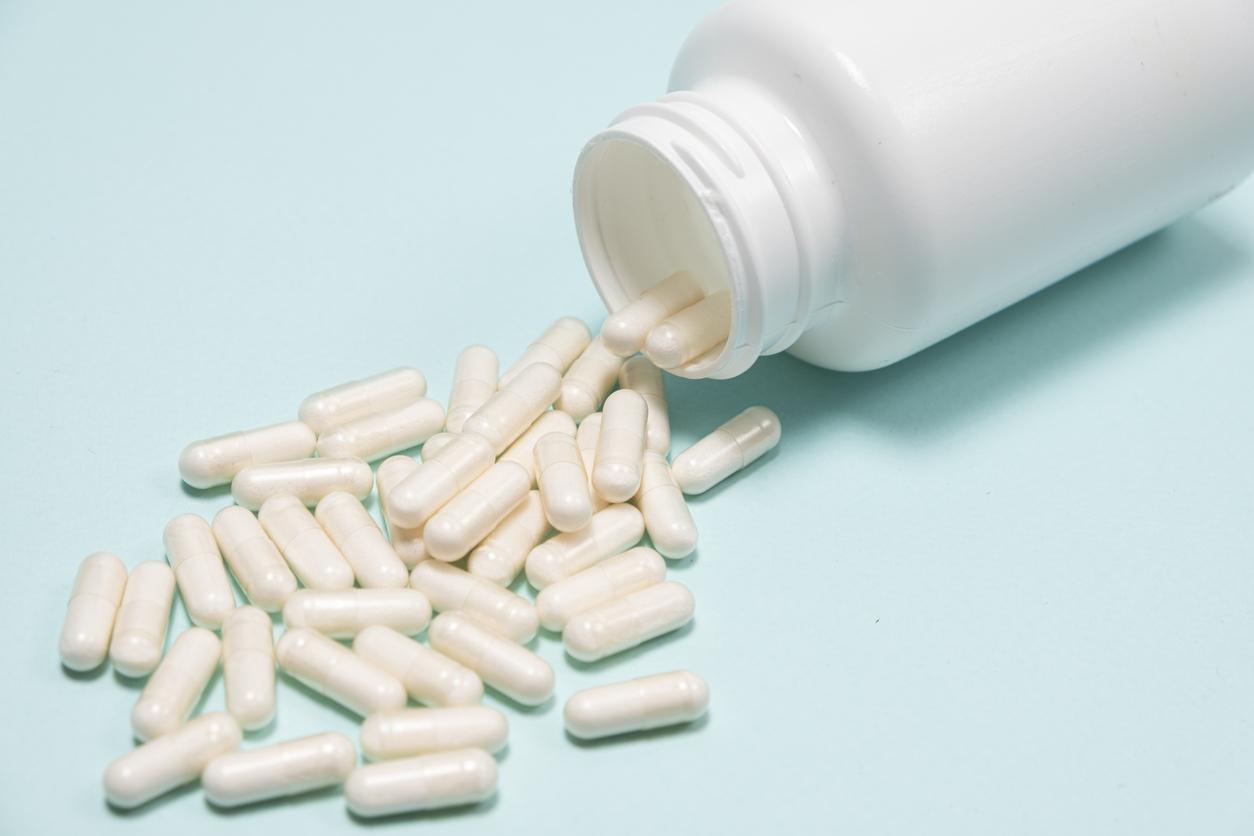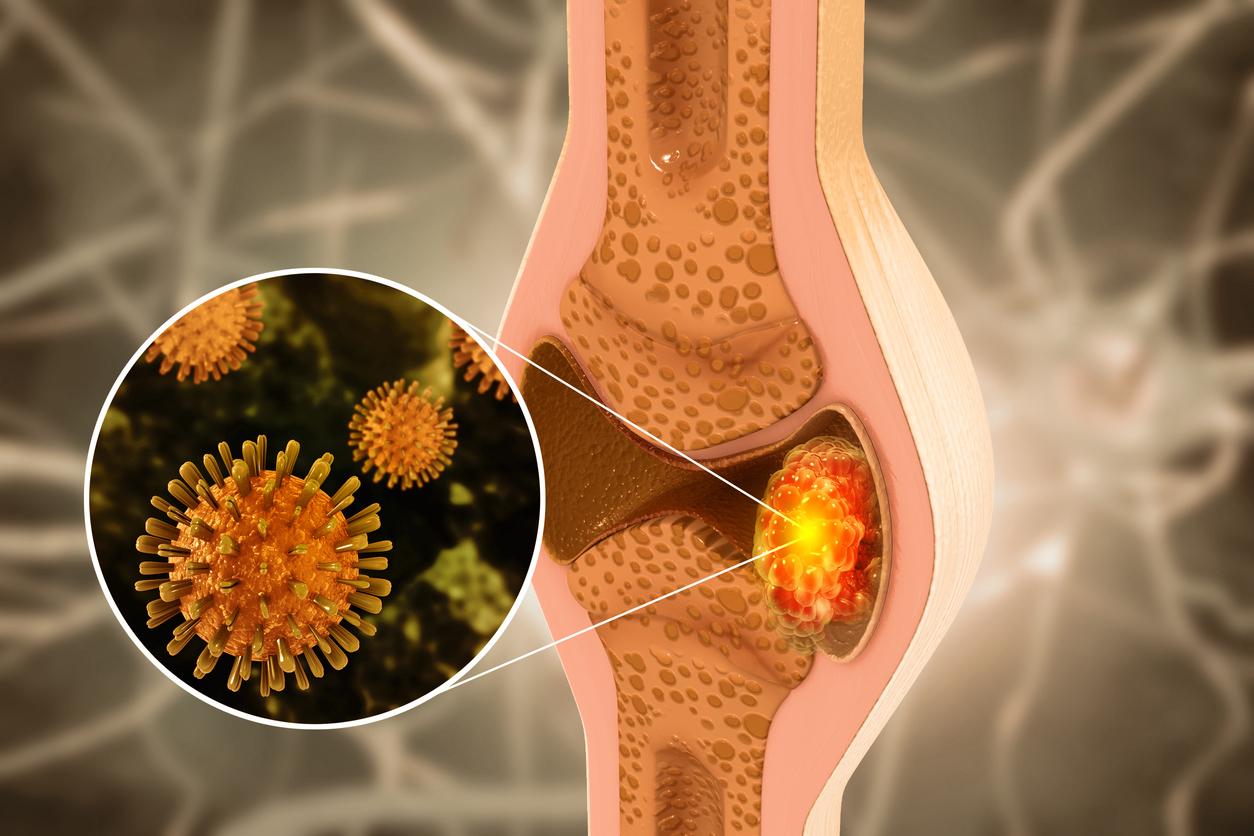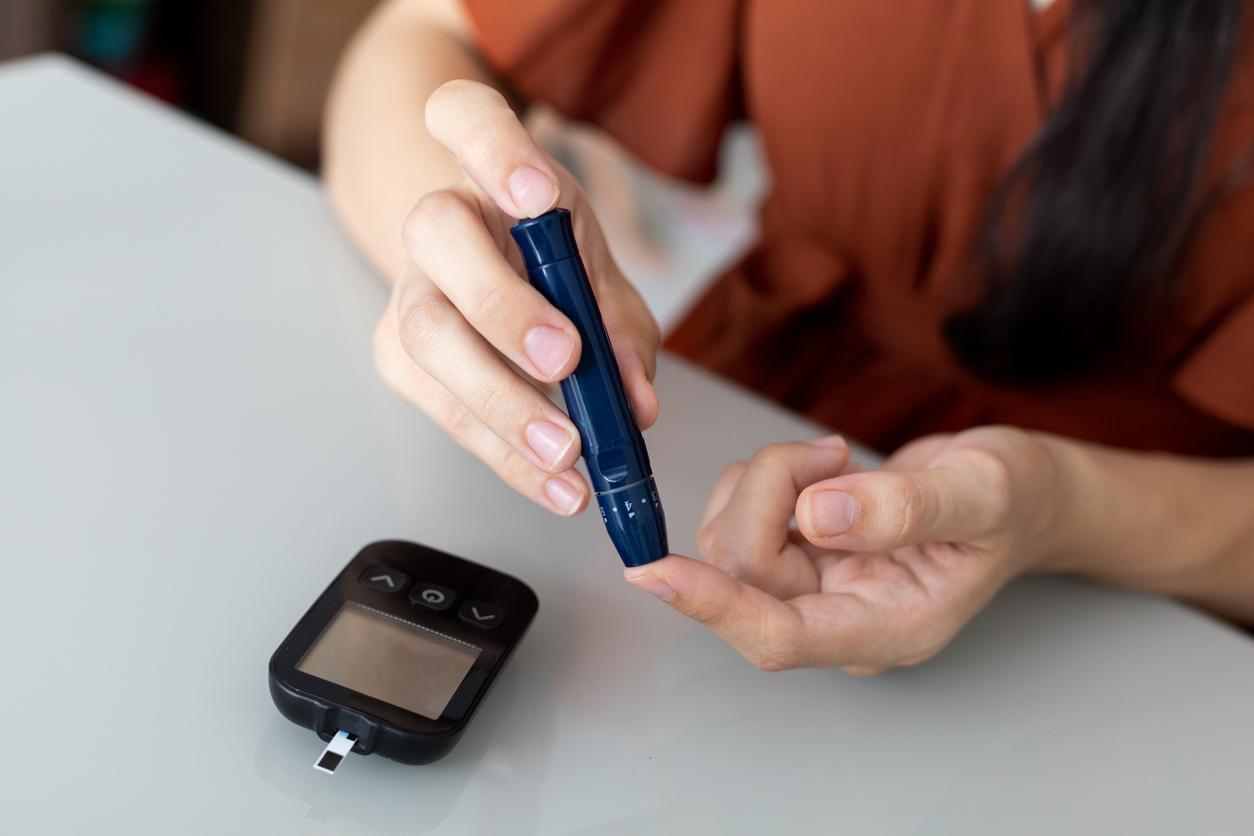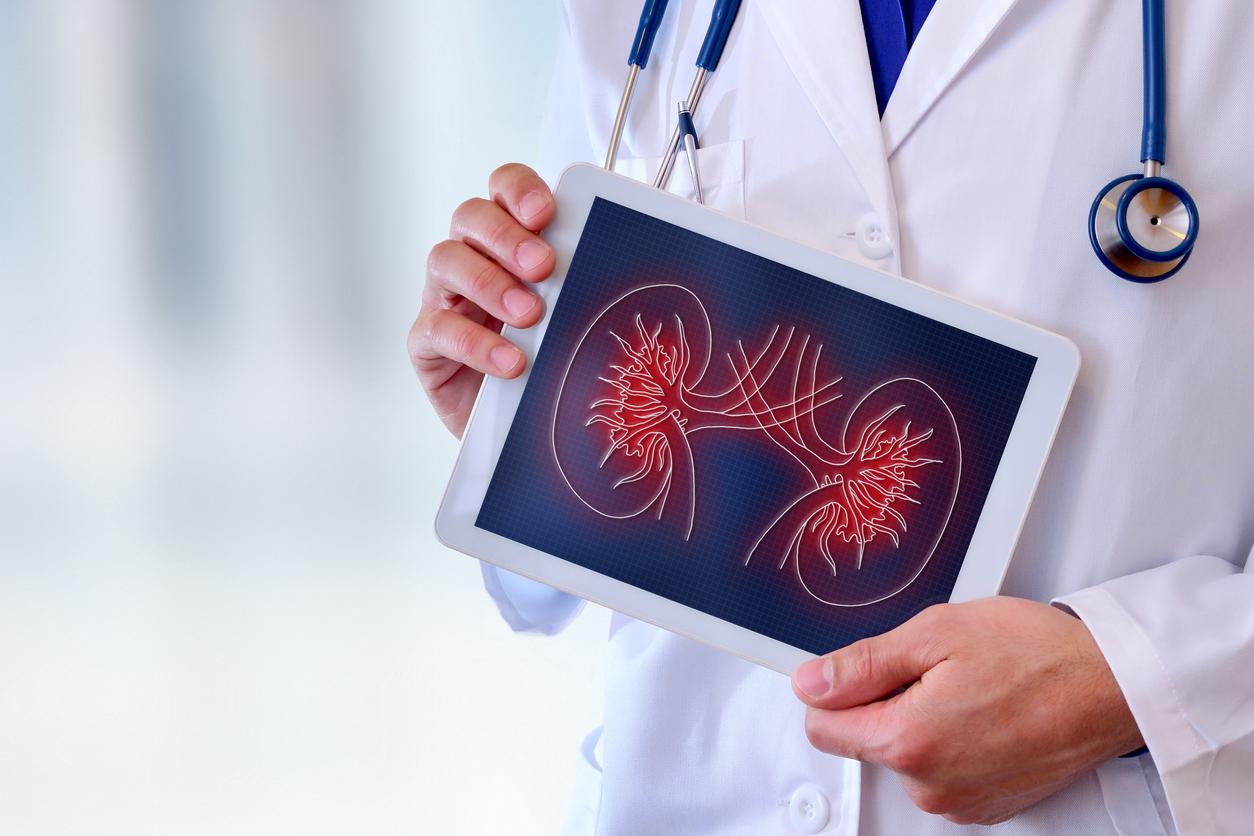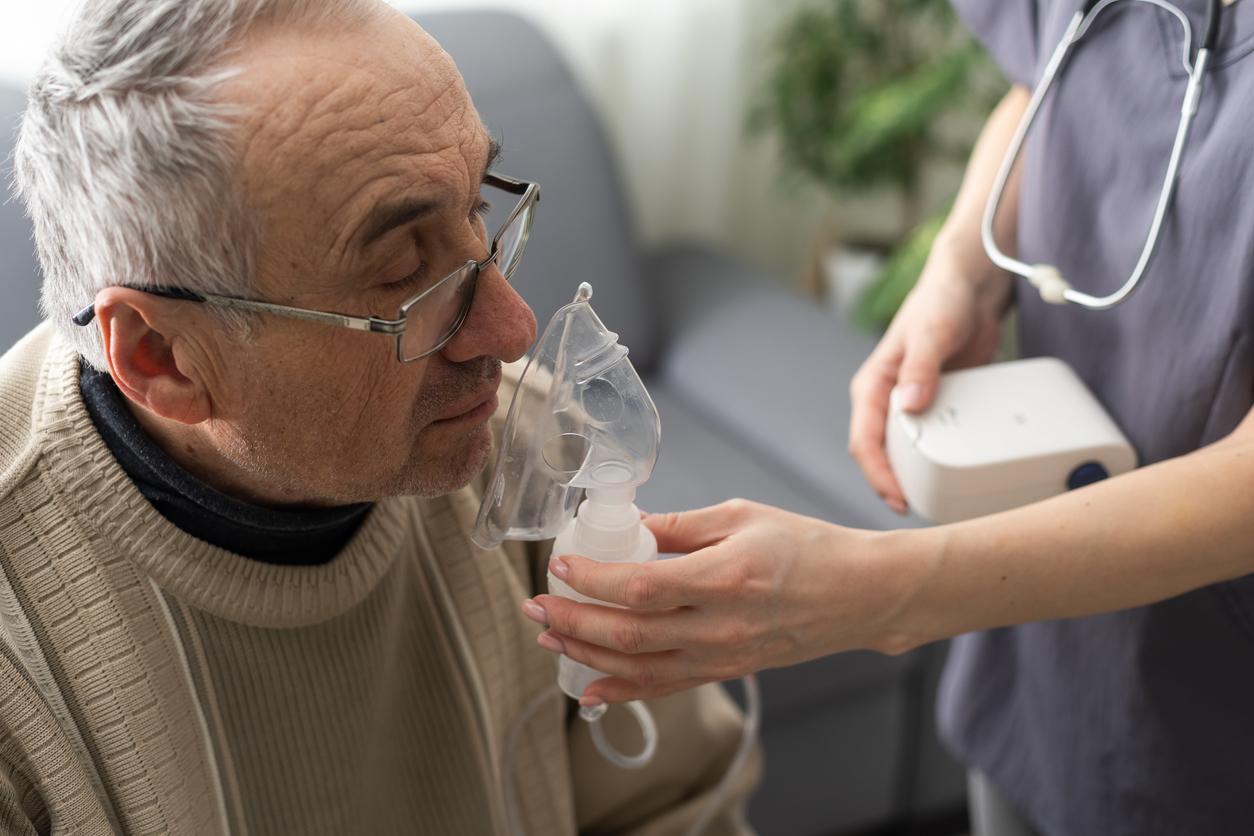Before explaining what the type 1 diabetes, you have to take a look at insulin. I‘insulin is a hormone made by the pancreas – and, in particular, by the ß cells of the islets of Langerhans, which are pancreatic cells.
“Every time we eat, the pancreas secretes insulin: this molecule acts as a “key” to allow sugar to enter the target organs that need it – the muscles, the liver… explains Dr. Florence Cousty-Pech, endocrinologist and diabetologist. In summary, the role of insulin is to maintain the balance of sugar levels in the blood by causing it to be consumed by the body’s tissues and by decreasing its production by the liver.“
Type 1 diabetes: definition. Type 1 diabetes (or T1D) belongs to the family of autoimmune diseases. “In type 1 diabetics, the pancreas is gradually destroyed by antibodies, i.e. by the patient’s own immune system“says the specialist.
It is more specifically a dysfunction of certain T lymphocytes (cells of the immune system) which begin to identify the ß cells of the pancreas as cells foreign to the patient’s body, and therefore to eliminate them.
Problem: with the destruction of the pancreas, the secretion of insulin stops. As a result, sugar builds up in the blood, glycaemia (i.e. blood sugar levels) rises, and chronic hyperglycaemia develops.
Warning ! Do not confuse type 1 diabetes with type 2 diabetes. If the first corresponds to a defect in insulin secretion (because the cells of the pancreas are destroyed by the immune system, therefore), the second occurs due to resistance to insulin (the insulin secreted by the pancreas is not efficient enough). However, these two pathologies are characterized by chronic hyperglycemia.
Type 1 diabetes: who is affected and what are the risk factors?
To know. Type 1 diabetes is not common: experts estimate that it represents only 10% of diabetes cases. In France, around 6,000 new cases are diagnosed each year. The number of cases diagnosed each year in children increased by more than 37% between 1988 and 1997.
“Type 1 diabetes is a disease that appears more in children, adolescents or young adults, generally before the age of 20, although it can also be encountered later“says Dr. Florence Cousty-Pech.
Type 1 diabetes: the causes. The origins of type 1 diabetes are still poorly understood. This autoimmune disease is caused by both genetic factors (predisposition genes have been identified: these include genes of the HLA system, which allow the immune system to distinguish cells in the body from foreign cells ) and by environmental factors (nutritional factors, exposure to toxins, etc.).
“There are quite a few “families” of type 1 diabetics: we cannot say that it is a hereditary diseasenotes Dr. Cousty-Pech.
Type 1 diabetes: what are the symptoms?
The chronic hyperglycaemia that characterizes type 1 diabetes is responsible for non-specific symptoms. In particular, we can observe:
- Abnormally severe fatigue,
- A visual “blur”,
- A poly-uropolydipsic syndrome: “the patient is very thirsty and needs to pee“clarifies the endocrinologist.
- Abnormally frequent infections (viral, bacterial, etc.),
- Difficult healing
- The presence of sugar in the urine (glycosuria),
- Weight loss and digestive disorders.
And also… “Type 1 diabetics are susceptible to ketoacidotic coma: this neurological symptom results from the acidification of the blood, itself caused by hyperglycemia“adds the specialist.
Type 1 diabetes: what are the possible complications? Type 1 diabetes is a serious disease. “The sugar deposits on the blood vessels and alters“explains Dr. Cousty-Pech. On the side of complications, we can therefore cite:
- Diabetic retinopathy:there may be damage to the blood vessels of the eyes, which requires regular fundus examinations“,
- chronic renal failure,
- An increased risk of myocardial infarction (also known as “heart attack”),
- An increased risk of cerebrovascular accident (CVA),
- Peripheral artery damage:this results in poor healing: in the event of a wound, there is an increased risk of amputation“,
- An increased risk of neuropathy (because sugar is also deposited on the sheaths of the nerves): one can then observe pain (sometimes disabling) and/or sensitivity disorders (sensations of tingling, burning, etc.).
Type 1 diabetes: how is it diagnosed and what are the treatments?
Diagnostic. The diagnosis of type 1 diabetes requires blood tests: “diabetes can be diagnosed when, on two successive blood samples taken on an empty stomach, the blood sugar level (glycaemia) is greater than or equal to 1.26 g/Lexplains Dr. Cousty Pech.Nevertheless, the mode of entry into the disease is often brutal, with an ketoacidotic coma.“
Then, to diagnose type 1 diabetes, it is necessary to highlight specific antibodies, again thanks to a biological examination.
Treatments. “For type 1 diabetes as for type 2 diabetes, the first treatment consists of lifestyle and dietary management.” notes the endocrinologist. A specific diet is put in place: this bans fast sugars (candies, cakes, honey, jams…), regulates slow sugars (pasta, rice, potatoes) and combines necessarily the latter with vegetables.”It is also imperative to eat as little fat as possible and not to skip meals.“
Swimming, running, dancing… Regular physical activity is also recommended. “To function, muscles use sugar: sport therefore helps to reduce blood sugar levels“says the diabetologist.
In case of type 1 diabetes, it is necessary to provide insulin to the body (insulin therapy), Type 1 diabetics use “slow” insulin and “fast” insulin (injected using a syringe or a pen, in the thigh, stomach or arm). Rapid-acting insulin has an immediate and short-term action that compensates for food intake.
“Insulin pump systems exist and can even be coupled with continuous glucose measurement systems tending to a closed loop system“adds the doctor.
And also… In diabetic patients for several years whose disease is no longer balanced by insulin therapy, a transplant of islets of Langerhans can be proposed. As a last resort, a pancreas transplant can be performed – in very specific circumstances.
Thanks to Dr. Florence Cousty-Pech, endocrinologist and diabetologist at the Ambroise Paré clinic in Toulouse (ELSAN group).
Sources:
Read also :
- Diabetes: 9 dessert recipes low in sugar (but delicious)
- Diabetes: what are the warning signs?









